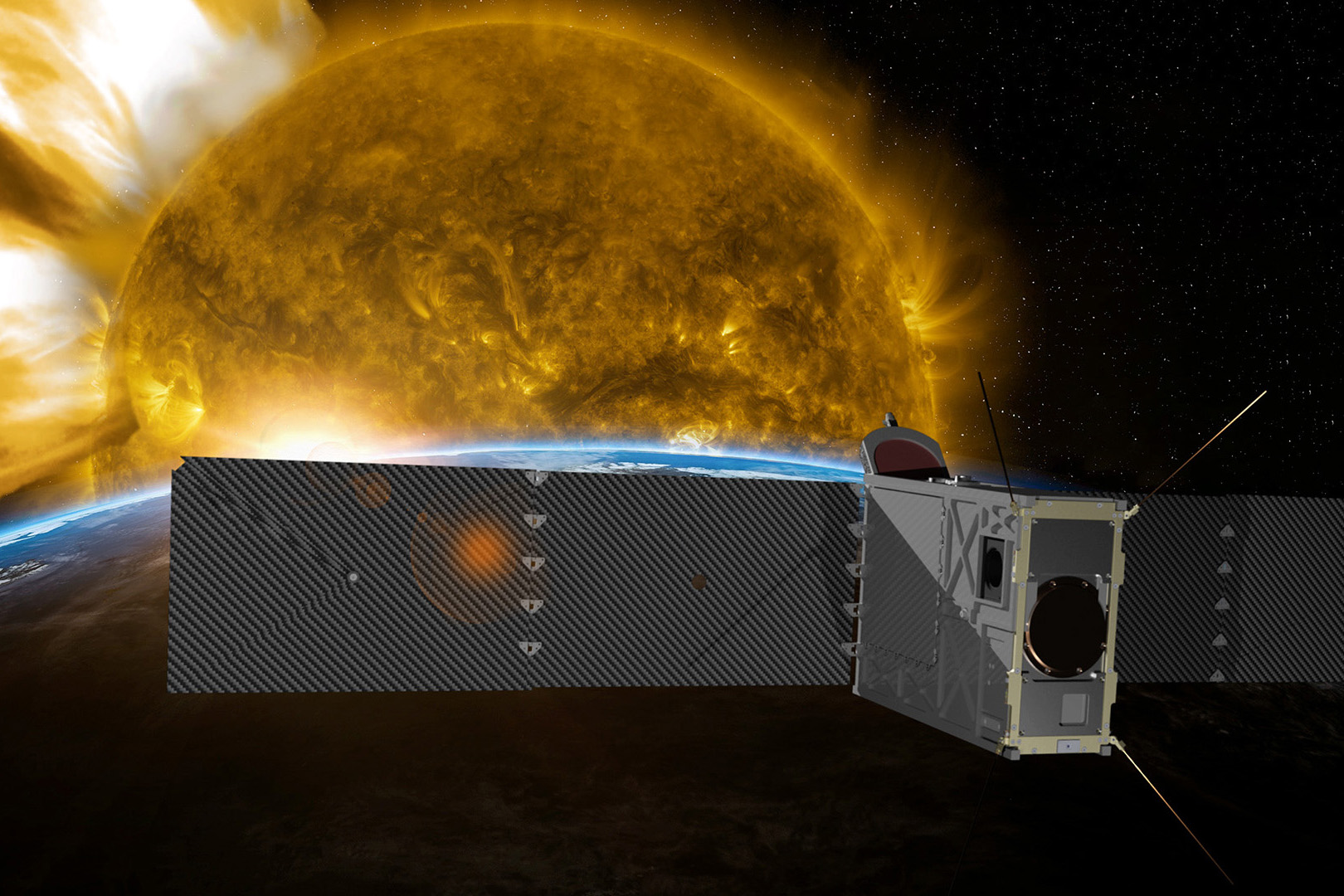Our Contribution
Blasting matter from the Sun at hundreds to thousands of miles per second, coronal mass ejections (CMEs) are some of the most massive and powerful phenomena in the solar system. Yet what mechanisms drive these outbursts to such incredible speeds remains unknown.
The Sun Coronal Ejection Tracker (SunCET) mission, a sensitive sensor-camera combination set to launch in 2025, seeks to determine what mechanisms accelerate most CMEs to speeds approaching 620 miles (1,000 kilometers) per second.
Jointly led by APL and the Laboratory for Atmospheric and Space Physics at the University of Colorado Boulder, SunCET will capture the first complete acceleration sequences of CMEs, from their beginnings in the lower part of the Sun’s atmosphere to at least four solar radii—roughly 432,700 miles (696,200 kilometers)—from the solar surface.


